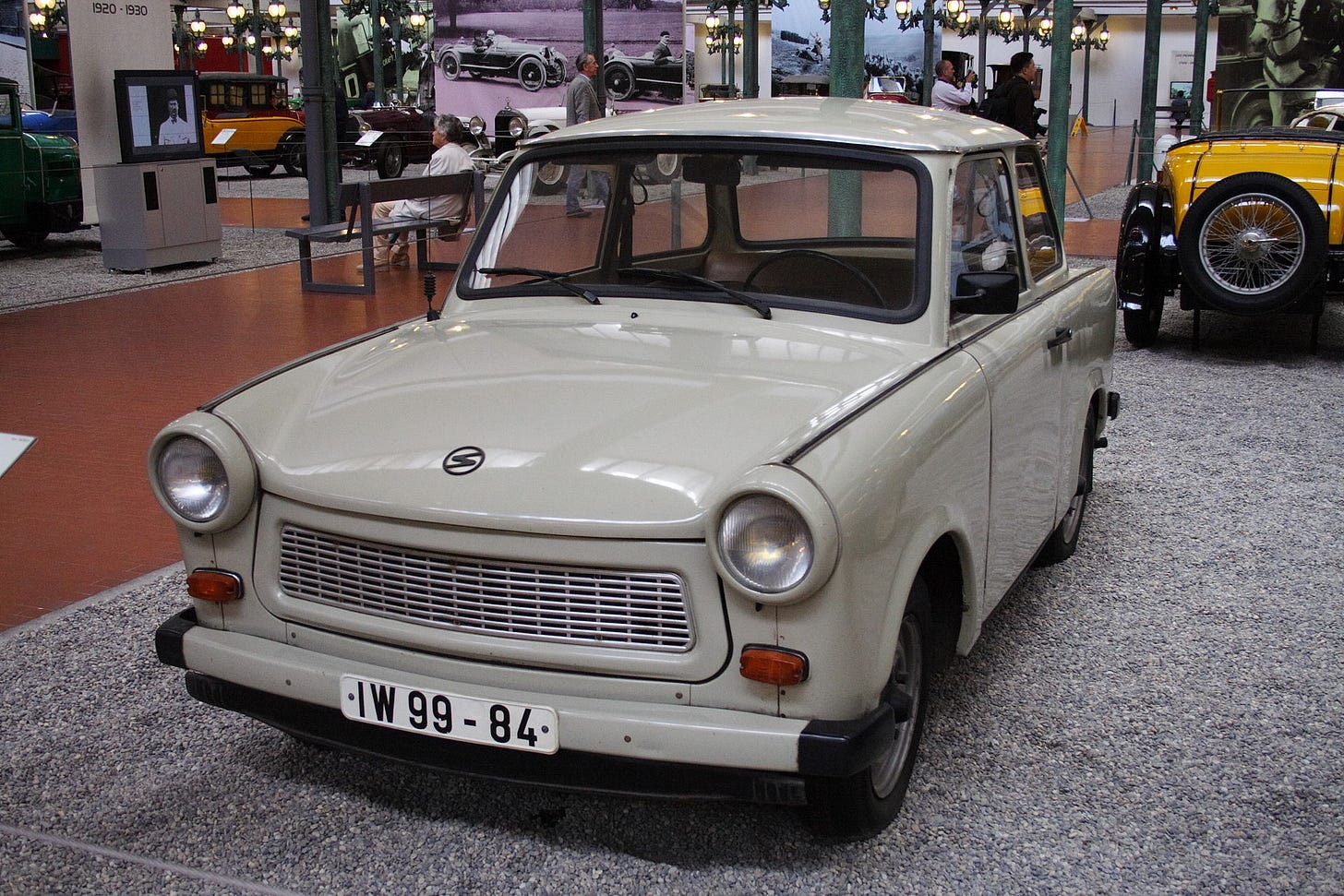Atomic Layer of the Day:
Today’s article will be quite unusual because it has absolutely nothing to do with 3D printing. However, when I came across this story on a bioplastics website, I felt I just had to share it with you.
This is a Trabant.
If you were born in the 1990s, you probably have no idea what that is. If you were born in the 1980s but outside Europe, you might not know either. However, for those born in the 1980s or earlier, and especially in Eastern Europe (like me), this story is a nostalgic trip down memory lane.
The Trabant was the first car made from bioplastics, introduced in 1957 in East Germany as a response to the popular Volkswagen Beetle in West Germany. Its production ended in 1991, shortly after the reunification of Germany in 1990. The name "Trabant" comes from the Slavic word for "companion" and also refers to the Soviet satellite "Sputnik."
The Volkswagen Beetle was an affordable car, with "Volkswagen" meaning "people's car" in German. The Trabant was designed to be East Germany's alternative—a simple, inexpensive means of transport for the masses.
What made the Trabant unique was its innovative body made from a material called Duroplast. This composite consisted of plastic mixed with natural fibers like wool or recycled cotton. Duroplast made the Trabant the first mass-produced car with biocomposite materials. It was lightweight, cheap to produce, and resistant to rust, though not particularly crash-resistant.
The Trabant became a symbol of socialist-era automotive engineering and an icon of everyday life in East Germany. Despite its flaws, such as outdated technology and a low-performance engine, it was widely used and valued by owners for its simplicity and functionality. Today, we might compare it to modern city cars like the Toyota Aygo, KIA Picanto, or Nissan Micra—affordable and compact urban vehicles.
The Trabant’s production ceased with the fall of the GDR and the influx of more modern cars from the West into reunified Germany. Today, the Trabant remains a historical curiosity and a collector's item. Its pioneering use of biocomposites was ahead of its time, and the car still evokes a sense of nostalgia as a symbol of a bygone era.
Atomic Layer from the Past:
12-11-2018: MakerBot launched Method.
News & Gossip:
The Meltio system helped the crew of the USS Somerset to quickly resolve an issue during the RIMPAC 2024 exercises. Using DED technology, the crew produced a missing part for the reverse osmosis pump within hours, avoiding a week-long wait for delivery. The SAMM Tech system, equipped with a Meltio head for metal printing, allows on-site manufacturing and processing of parts.
Demcon has acquired Bond3D, a Dutch 3D printing company specializing in high-performance polymer printing, particularly PEEK. Bond3D's proprietary technology enables the production of 100% leak-tight, high-strength components. The acquisition aims to enhance R&D and engineering capabilities, expanding applications in the medical, semiconductor, and clean energy sectors. Bond3D will continue its operations in Enschede.
After gaining greater control over Nano Dimension's board (including appointing four nominees and removing Yoav Stern last week), Murchinson announced plans to reassess the company’s strategy, evaluate past acquisitions, and improve management to "enhance shareholder value." Meanwhile, we are still waiting for the formal merger with Desktop Metal...





